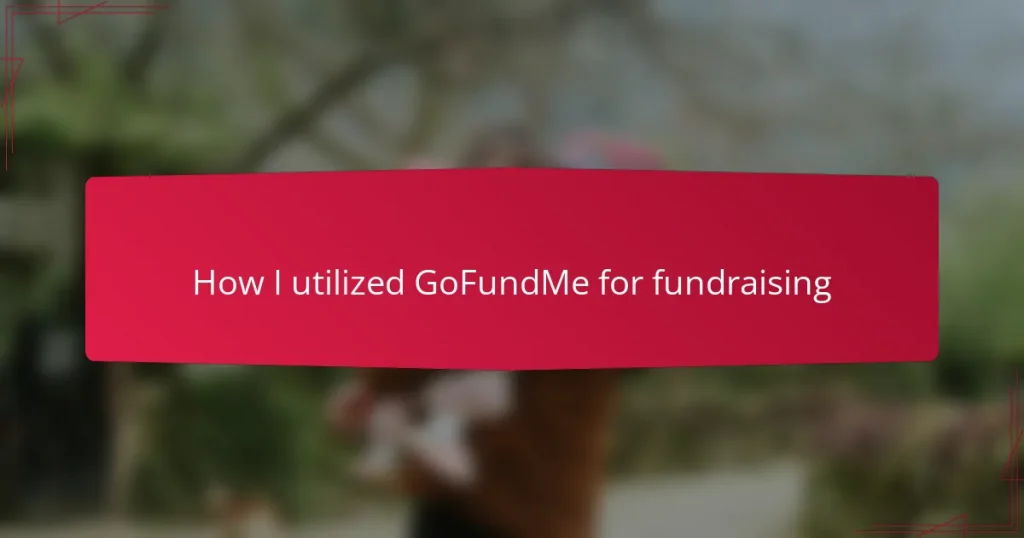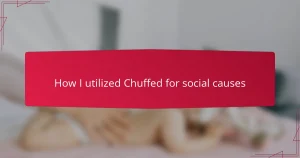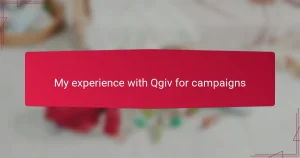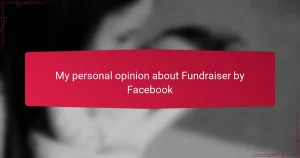Key takeaways
- Emphasizing personal storytelling and emotional connections significantly enhances family fundraising efforts.
- Utilizing GoFundMe’s transparency and features fosters trust and engagement among donors.
- Consistent communication, including updates and acknowledgments, helps maintain donor interest and motivation.
- Nurturing relationships beyond the campaign encourages long-term support and involvement from contributors.
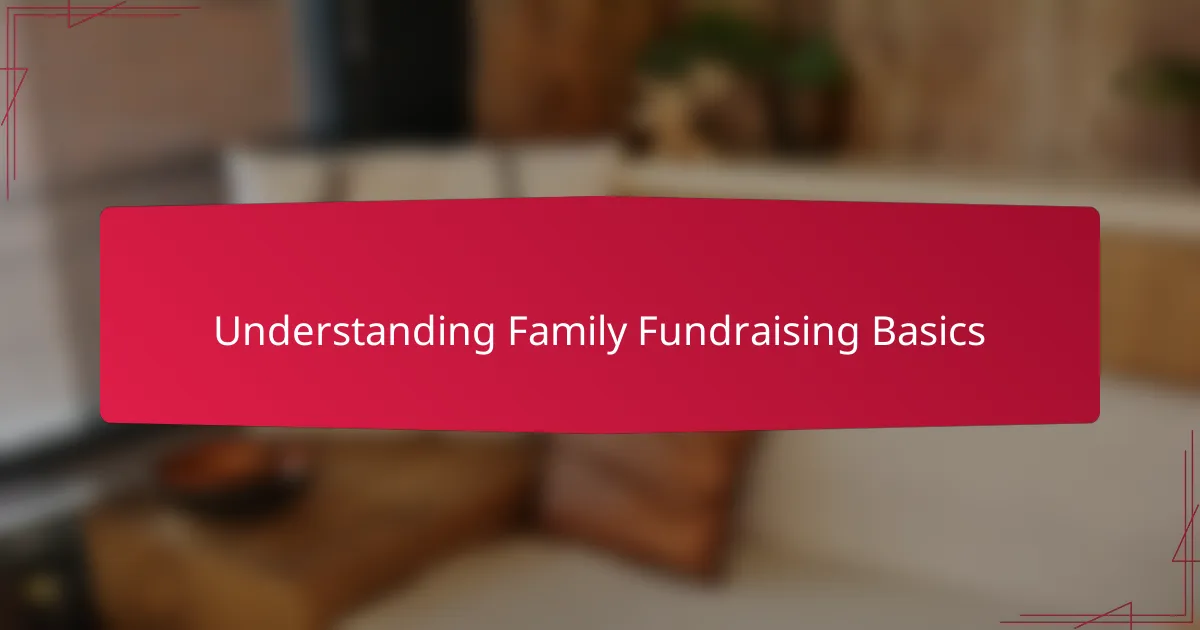
Understanding family fundraising basics
Understanding family fundraising basics is crucial before jumping into any campaign. From my experience, knowing the emotional connection behind each fundraiser helps engage supporters more personally. For families, fundraising isn’t just about money; it’s about sharing a story that resonates with the community.
| Aspect | Family Fundraising |
|---|---|
| Purpose | Support for personal or medical needs, emergencies, or special family projects |
| Emotional Impact | Deeply personal stories often drive contributions and community support |
| Engagement | Relies heavily on personal networks like friends, relatives, and local community |
| Platform Example | GoFundMe widely used due to ease of setup and storytelling features |

Overview of GoFundMe platform
GoFundMe stands out as a platform designed specifically for personal fundraising, and its user-friendly setup made it easy for me to launch a campaign quickly. What really struck me was how it allows you to tell your story with photos and updates, making it more than just asking for money. Have you ever noticed how sharing your journey can spark immediate support? That’s exactly what I experienced on GoFundMe.
The platform also offers transparency in donations, which builds trust with contributors—something I found essential when reaching out to friends and family. It felt reassuring to everyone involved, knowing exactly where the funds were going. From my experience, this transparency helped keep my supporters engaged and willing to help even more.
Lastly, GoFundMe’s vast reach connected me beyond my immediate circle in San Diego, opening doors to a broader community of empathetic donors. I was amazed at how quickly word spread, proving that the platform’s network can amplify a family’s message far beyond expectations. Have you ever wondered how technology can turn strangers into helpers? For me, GoFundMe made that possible.

Setting up a GoFundMe campaign
Setting up a GoFundMe campaign was surprisingly straightforward. I found that clearly telling our family’s story and explaining why we needed support made the campaign resonate more deeply with contributors. Sharing real moments of hope and struggle helped people connect, which boosted our fundraising much more than just listing facts.
| Step | What I Did |
|---|---|
| Campaign Title | Chose a heartfelt and clear title that reflected our family’s situation |
| Story | Wrote an honest and personal story about why we needed help, including specific challenges |
| Photos | Uploaded pictures that showed our family and the situation, making it relatable |
| Goal Amount | Set a realistic fundraising target based on actual needs |
| Sharing | Shared the campaign on social media and asked close friends to spread the word |

Strategies for effective fundraiser promotion
Strategies for effective fundraiser promotion often boil down to understanding your audience and crafting messages that resonate emotionally. When I promoted my GoFundMe campaign, I found that sharing personal stories and regular updates kept supporters engaged and encouraged sharing. Using social media platforms strategically, with targeted posts rather than just broad messages, made a significant difference in outreach.
| Promotion Strategy | My Experience |
|---|---|
| Personal Storytelling | Created heartfelt posts explaining why the fundraiser mattered, which helped people connect on a personal level. |
| Consistent Updates | Posted weekly progress reports that motivated donors by showing real impact and ongoing need. |
| Targeted Social Sharing | Focused on Facebook groups and community pages relevant to San Diego families, which boosted visibility effectively. |

Managing donations and donor communication
Staying on top of donations felt like steering a ship through sometimes choppy waters. I made sure to track every contribution carefully, which helped me maintain transparency and build trust—a crucial part when you’re asking people to support your family. Have you ever noticed how just acknowledging a donation can deepen someone’s connection to your cause? I found that sending timely thank-you messages turned one-time donors into ongoing supporters.
Communicating regularly with donors became my way of sharing our journey beyond just numbers. I used GoFundMe’s update feature to post personal notes, photos, and progress reports. This not only kept supporters informed but also made them feel like part of the family’s story. From my perspective, those little updates created a ripple effect, encouraging more people to contribute and spread the word.
I also learned that being honest about challenges and breakthroughs made donor communication feel genuine. Instead of just celebrating milestones, I shared setbacks and small wins equally. It made me wonder—would I want to support a fundraiser if it felt distant or purely transactional? For me, meaningful communication was what made all the difference in keeping the community truly engaged.
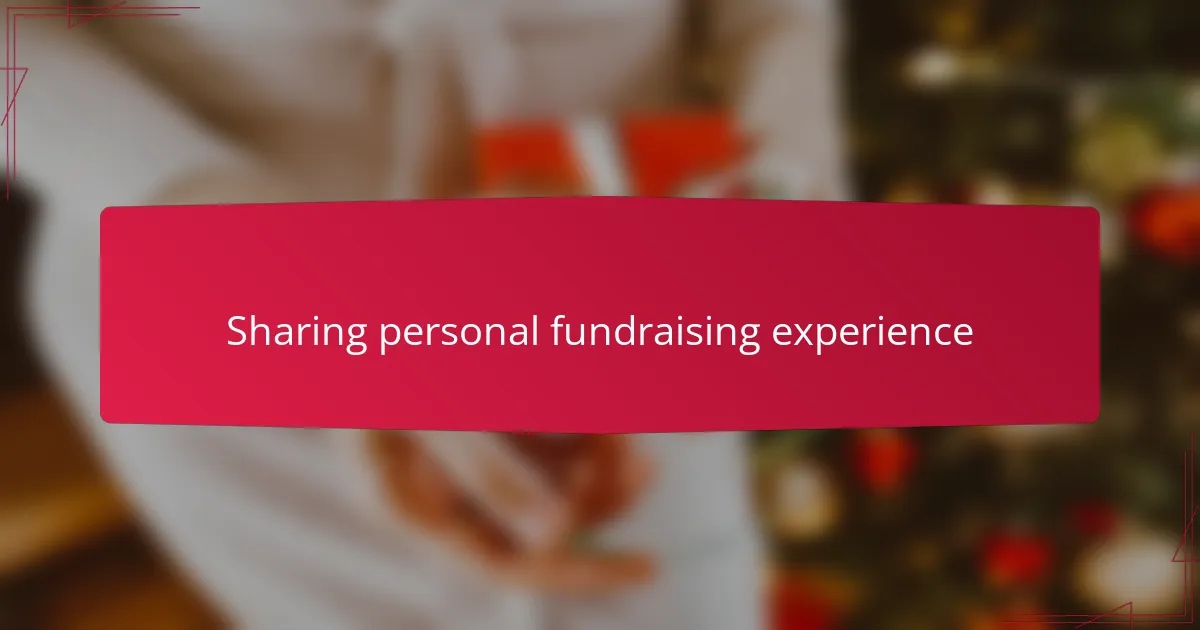
Sharing personal fundraising experience
When I first launched my GoFundMe campaign, I wasn’t sure how people would respond to such a personal ask. Yet, sharing our family’s story in an open, heartfelt way broke down barriers I hadn’t expected—it felt like inviting others into our lives, not just asking for money.
I remember the moment when a friend I hadn’t spoken to in years donated and left a message about how our story touched her. That simple connection made me realize how powerful vulnerability can be in fundraising. Have you ever thought about how a shared story can bridge distance and time, bringing support from unexpected places?
Throughout the campaign, I found myself reflecting on every message, every donation, and how each one was more than just help—it was encouragement that fueled our hope. Sharing those ups and downs made the whole experience feel less like a transaction and more like a community coming together.

Tips for sustaining fundraising success
One thing I learned about sustaining fundraising success is the power of consistent communication. Keeping people updated with honest progress reports and heartfelt messages not only shows appreciation but also reminds supporters that their help truly matters. Have you ever noticed how a simple update can reignite enthusiasm and motivate donors to share your cause again?
Another tip that worked well for me was setting realistic goals and celebrating even small milestones along the way. Those little victories kept our family motivated and gave our supporters tangible reasons to keep giving. It made me think—wouldn’t it be easier to stay committed if you felt like every step forward counted?
Lastly, I found that nurturing personal connections beyond just the campaign itself made all the difference. Regularly thanking donors by name and responding to their messages created genuine relationships that extended past the fundraiser. From my experience, when people feel personally involved, they become lifelong champions of your cause rather than just one-time contributors.
